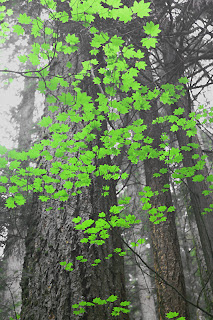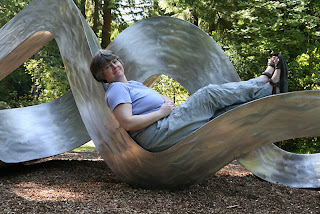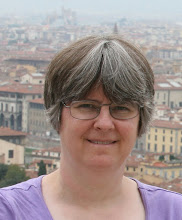I read an interesting post on creativity today on Doug Stockdale's Singular Images blog. Some key excerpts:
…from Octave of Prayer, Minor White wrote “Intensified concentration is common to all creative people…philosphers name this concentration Creativity; the devout call it Meditation”.
…
[H]e describes different ways of artists getting into what I call the ”zone”. Time seems to drift. There is an intensity to the moment as the concentration seems to increase almost on its own. You seem to flow effortlessly.
…
I remember an old adage; try to make at least one exposure within the first 15 minutes of arriving at the area you are interesting in photographing. Now I understand that this is a methodology to engage me and my vision, increase my concentration and make a quicker transition in to the “zone”.
I long for that experience. I'm not sure I've ever had it, or if I have, it has been so long that I've forgotten it. I usually have no problem making an exposure within the first 15 minutes, but I think I usually make one too quickly, without taking the time to size up my surroundings and engage in meditation. Thus I usually get tired of an area quickly and move on, or stop shooting. That's not entirely true when I'm somewhere that totally takes my breath away. But I think that's different than being "in the zone" as Doug describes. When rapt by the sheer beauty of a place, I sometimes don't even think about the process of creating my art. I also do it too quickly, since I'm more interested in simply absorbing the experience of being in that place. Not that that is a bad thing, mind you. If I were incapable of appreciating beauty except by making art about it, I'd be impoverished as a human being, I think.
It seems to me that being "in the zone" can be independent of the level of ordinariness or beauty of the subject being photographed, however due to the spiritual atrophy most of us suffer from, we usually need beauty to kickstart the experience.
.jpg) One experience I can remember that comes closest to being "in the zone" was when I was visiting some relatives in Italy and I accompanied a cousin and her granddaughter to the playground. As we were walking home, I saw the little girl catch a glimpse of a water fountain up ahead and run towards it gleefully. The lighting was perfect, my camera was in hand, and I was alert to the moment. I ran ahead of her and reached the fountain before she did. When she got there, I just started shooting, enjoying watching her delight in how the water felt on her hands, recalling a lost childhood of my own, etc. It was positively magical. This all happened in a matter of seconds, perhaps a minute and a half at most. Here is the prize photo that came out of that.
One experience I can remember that comes closest to being "in the zone" was when I was visiting some relatives in Italy and I accompanied a cousin and her granddaughter to the playground. As we were walking home, I saw the little girl catch a glimpse of a water fountain up ahead and run towards it gleefully. The lighting was perfect, my camera was in hand, and I was alert to the moment. I ran ahead of her and reached the fountain before she did. When she got there, I just started shooting, enjoying watching her delight in how the water felt on her hands, recalling a lost childhood of my own, etc. It was positively magical. This all happened in a matter of seconds, perhaps a minute and a half at most. Here is the prize photo that came out of that.
I have just discovered Picasa Web Albums. A great way to share a series of photos from a trip if you just want to upload them and not bother with blog commentary. Free, easy to publish with, and the nicest viewer UI of any web album product I've seen yet. All you need is a Google account, which all of us Blogger users have anyway. In fact, if you have a blog on Blogger, when you sign up on the Picasa website, it automatically makes an album of all the photos you have posted in your blog, and keeps adding new ones automatically as you post more to your blog. However, it seems to put them in random order initially (though you can reorder them however you like afterwards), and it only goes back so far. In my case, 83 photos, back to December 2006.
.jpg) My dad plays the cello in a community orchestra. I took this photo while they were warming up for a concert. That's why I was able to get up so close and poke my camera practically into the cello section. It was taken with a 70mm lens, F2.8 at 1/40th of a second, ISO 1600. I cropped it slightly in Photoshop, but it was already definitely a close-up shot of just the hands and bows of these two cellists. I love the fact that instruments in an orchestra section play together (at least they're supposed to!) -- setting up a natural repeating pattern of lines and seemingly choreographed motions. That, along with the deep, brown tones of the wood, and the white of the players' concert attire, all contribute to the appeal of this image for me. The cello is one of my favorite instruments, both for its rich sound and for its physical beauty -- elegant curves and fine craftsmanship....And because my Dad plays it!
My dad plays the cello in a community orchestra. I took this photo while they were warming up for a concert. That's why I was able to get up so close and poke my camera practically into the cello section. It was taken with a 70mm lens, F2.8 at 1/40th of a second, ISO 1600. I cropped it slightly in Photoshop, but it was already definitely a close-up shot of just the hands and bows of these two cellists. I love the fact that instruments in an orchestra section play together (at least they're supposed to!) -- setting up a natural repeating pattern of lines and seemingly choreographed motions. That, along with the deep, brown tones of the wood, and the white of the players' concert attire, all contribute to the appeal of this image for me. The cello is one of my favorite instruments, both for its rich sound and for its physical beauty -- elegant curves and fine craftsmanship....And because my Dad plays it!


.jpg)


.jpg)


.jpg)
.jpg)
.jpg)
.jpg)
.jpg)
.jpg)
.jpg)
.jpg)
.jpg)


